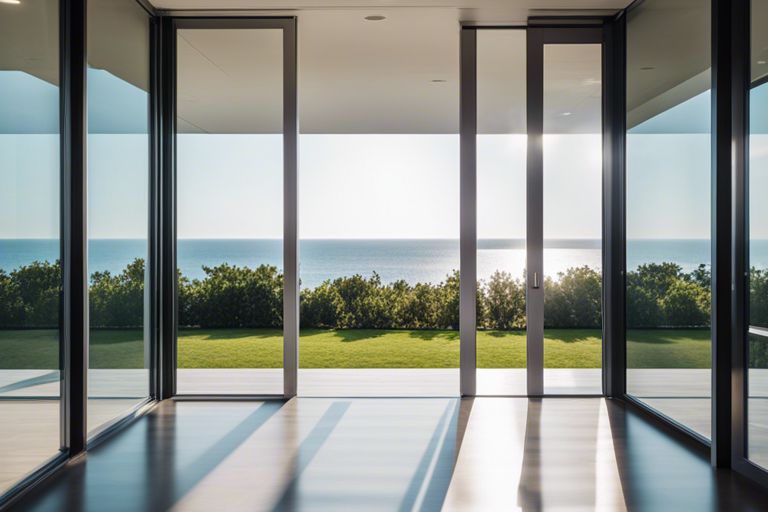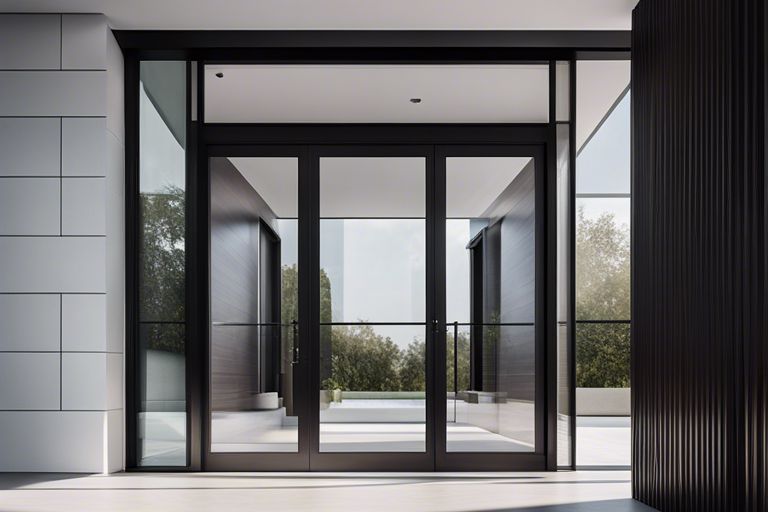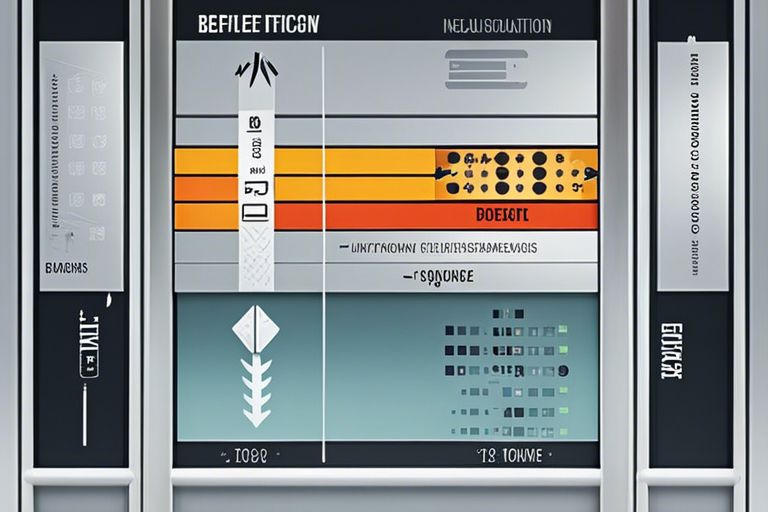Flat rooflights have revolutionised interior design by introducing natural light into spaces that were previously dark and dreary. Their sleek design not only enhances the aesthetics of a room but also has numerous benefits for occupants. The influx of natural light through rooflights can improve the mood, productivity, and overall well-being of those in the space. Additionally, the energy efficiency of a building can be enhanced as the need for artificial lighting during the day is reduced. However, it is essential to consider proper installation and maintenance to prevent leaks and water damage which can pose a risk to the interior of a building. Overall, incorporating flat rooflights into interior design can transform a space and create a favourable environment for its occupants.
Key Takeaways:
- Natural Light: Flat rooflights maximise the amount of natural light entering a space, creating a bright and airy atmosphere.
- Visual Connection: They enhance the visual connection between indoor and outdoor spaces, blurring the boundaries and creating a seamless transition.
- Aesthetics: Flat rooflights add a modern and sleek design element to any room, giving it a contemporary and stylish look.
The Evolution of Natural Lighting Solutions
As interior design trends have shifted towards embracing more natural light, the evolution of lighting solutions has played a key role in transforming living spaces. Natural light not only enhances the aesthetics of a room but also has significant impacts on our overall well-being and productivity. Traditional windows have long been the primary source of natural light in buildings, offering views of the outside world and allowing daylight to filter in. However, advancements in architecture and design have led to the rise of modern rooflights as a more innovative and efficient way to bring natural light into interiors.
From Traditional Windows to Modern Rooflights
Traditional windows have limitations in terms of the amount of light they can bring in and the flexibility in design they offer. In contrast, modern rooflights are strategically placed on flat roofs to maximise the amount of sunlight that enters a room. They are designed to be sleek and minimalistic, blending seamlessly into the architecture of a building. The shift from relying solely on windows to incorporating rooflights in interior design has revolutionised the way natural light is utilised in living spaces, creating bright and airy environments.
Flat rooflights have become increasingly popular due to their ability to provide consistent natural light throughout the day and their versatility in fitting into various architectural styles. Unlike traditional windows, rooflights are not obstructed by walls or other structures, allowing uninterrupted light to flow into a room. This uninterrupted flow of natural light can dramatically transform the ambience of a space, making it feel more spacious, inviting, and connected to the outdoors.

Aesthetic Influences of Flat Rooflights on Interiors
Enhancing Spatial Perception with Natural Light
Flat rooflights have a profound impact on interior spaces by enhancing spatial perception through the introduction of natural light. An abundance of natural light flooding into a room can create an illusion of a larger space, making it feel more open and airy. By strategically placing rooflights, one can maximise the amount of daylight entering a room, giving it a sense of depth and dimension.
The play of light and shadow created by rooflights can also add visual interest to an interior, creating a dynamic and ever-changing atmosphere throughout the day. As the sunlight moves across the ceiling and walls, it can highlight architectural features, textures, and colours in a way that artificial lighting cannot replicate. This interplay of light not only enhances the aesthetics of a space but also contributes to the overall ambience and mood.
Integrating Rooflights into Different Interior Styles
Flat rooflights offer a versatile design element that can be seamlessly integrated into a variety of interior styles, from minimalist and contemporary to traditional and eclectic. Their sleek and unobtrusive design makes them suitable for both modern, clean-lined interiors and more traditional spaces, adding a touch of sophistication and elegance.
When incorporated thoughtfully, rooflights can become a focal point in the design scheme, drawing the eye upwards and creating a visually striking feature within the room. Whether placed in a kitchen, living room, or even a bathroom, rooflights can elevate the overall design aesthetic while providing the practical benefits of natural light.
Furthermore, rooflights can be customised to complement the existing decor, whether by choosing a frame finish that matches other metal accents in the room or by selecting tinted glass to enhance a specific colour scheme. This level of personalisation allows for seamless integration of rooflights into different interior styles, enhancing the overall design concept.

Functional Benefits of Flat Rooflights in Interior Design
Flat rooflights are a versatile and stylish addition to any interior space, offering a multitude of functional benefits that enhance both the aesthetic appeal and practicality of a room. In this chapter, we will explore the various advantages of incorporating flat rooflights into interior design, focusing on their energy efficiency, sustainability, as well as their significant impact on health and well-being.
Energy Efficiency and Sustainability
Flat rooflights play a crucial role in improving energy efficiency within a space by maximising the natural light that enters the room. This reduces the need for artificial lighting during daylight hours, lowering energy consumption and consequently decreasing utility costs. Additionally, the use of natural light can contribute to creating a more sustainable environment by reducing the carbon footprint associated with excessive energy usage.
The design of flat rooflights allows for optimal daylight exposure, which not only enhances the aesthetics of a room but also positively impacts the health and well-being of its occupants. Exposure to natural light has been linked to improved mood, productivity, and overall well-being. By integrating flat rooflights into interior design, homeowners can benefit from a greater connection to the outdoors and an increased sense of comfort and happiness in their living spaces.
Health and Well-being Enhancements Through Daylight Exposure
Increased exposure to natural light provided by flat rooflights has been shown to regulate the body’s circadian rhythm, leading to better sleep patterns and overall health. Natural light exposure can also help reduce the risk of seasonal affective disorder (SAD) and improve mental health by boosting serotonin levels in the brain. Therefore, incorporating flat rooflights into interior design not only enhances the aesthetic appeal of a space but also promotes the health and well-being of its occupants.

Challenges and Considerations
Structural and Installation Concerns
When incorporating flat rooflights into interior design, it is crucial to address structural and installation concerns. Ensuring the roof can support the weight of the rooflights is paramount to avoid any structural issues. It is advisable to consult with a structural engineer to assess the feasibility of the installation and identify any necessary reinforcements.
Additionally, the installation process of flat rooflights must be carried out meticulously to prevent any water leakages or insulation problems. Working with experienced professionals is key to guarantee a seamless installation that maintains the integrity of the roof and the building as a whole.
Balancing Privacy with Natural Illumination
One of the main challenges when utilising flat rooflights in interior design is balancing privacy with natural illumination. While rooflights bring in abundant natural light, they can also compromise privacy. It is essential to consider the placement of rooflights in areas where privacy is not a concern, such as bathrooms or higher ceilings.
Moreover, integrating blinds or glazing options can offer a solution to regulate the amount of light entering the space and provide privacy when needed. By carefully selecting the type of glazing or incorporating blinds into the design, homeowners can enjoy the benefits of natural illumination without sacrificing their privacy.
When designing a space with flat rooflights, it is crucial to strike a balance between maximising natural light and maintaining privacy. By selecting the right placement and considering additional features such as blinds, homeowners can create a light-filled environment that meets both their aesthetic preferences and practical needs.
The Impact of Flat Rooflights on Interior Design
Flat rooflights have a significant impact on interior design, allowing natural light to flood into spaces and create a sense of openness and connection to the outdoors. The use of rooflights in interior design can enhance the aesthetic appeal of a room, making it feel more spacious, airy, and inviting. By maximising natural light, flat rooflights can also help reduce the reliance on artificial lighting, leading to energy savings and a more sustainable living environment. Additionally, rooflights can play a crucial role in improving the overall well-being of occupants by promoting better concentration, mood, and productivity. In the aggregate, the integration of flat rooflights in interior design not only adds a contemporary and stylish touch to spaces but also contributes to creating healthier and more comfortable living environments.
FAQ
Q: What are flat rooflights and how do they impact interior design?
A: Flat rooflights are windows installed flush with the roof, allowing natural light to flood into interior spaces. They enhance interior design by creating a sense of spaciousness, increasing natural light levels, and providing views of the sky above, all of which contribute to a more open and inviting environment.
Q: How can flat rooflights improve energy efficiency in a building?
A: Flat rooflights help to reduce the reliance on artificial lighting during the day, lowering energy consumption. By harnessing natural light, they can also help to reduce heating and cooling costs by maximising solar heat gain in winter and minimising it in summer, thereby improving overall energy efficiency in a building.
Q: What are the design considerations when incorporating flat rooflights into a building?
A: When incorporating flat rooflights into a building, it is important to consider factors such as size, placement, and orientation to maximise the benefits of natural light. Additionally, the type of glazing, ventilation options, and any potential shading solutions should be carefully chosen to ensure optimal performance and comfort within the space.






